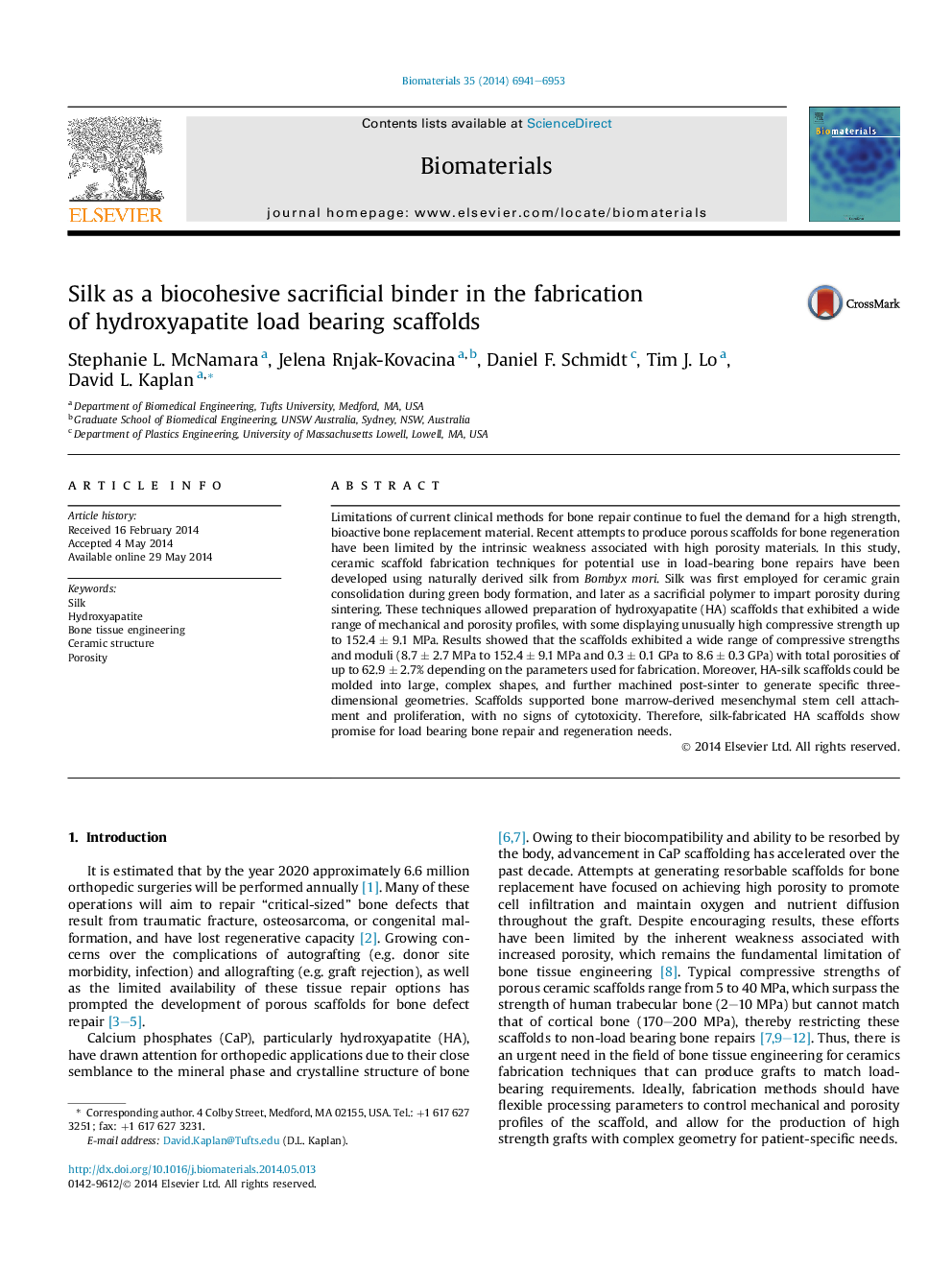| کد مقاله | کد نشریه | سال انتشار | مقاله انگلیسی | نسخه تمام متن |
|---|---|---|---|---|
| 10227537 | 449 | 2014 | 13 صفحه PDF | دانلود رایگان |
عنوان انگلیسی مقاله ISI
Silk as a biocohesive sacrificial binder in the fabrication of hydroxyapatite load bearing scaffolds
ترجمه فارسی عنوان
ابریشم به عنوان یک گیرنده قربانی بیولوژیک در ساخت داربست های باربری هیدروکسی آپاتیت
دانلود مقاله + سفارش ترجمه
دانلود مقاله ISI انگلیسی
رایگان برای ایرانیان
کلمات کلیدی
ابریشم، هیدروکسی آپاتیت، مهندسی بافت استخوانی، ساخت سرامیک، قطر بینی،
موضوعات مرتبط
مهندسی و علوم پایه
مهندسی شیمی
بیو مهندسی (مهندسی زیستی)
چکیده انگلیسی
Limitations of current clinical methods for bone repair continue to fuel the demand for a high strength, bioactive bone replacement material. Recent attempts to produce porous scaffolds for bone regeneration have been limited by the intrinsic weakness associated with high porosity materials. In this study, ceramic scaffold fabrication techniques for potential use in load-bearing bone repairs have been developed using naturally derived silk from Bombyx mori. Silk was first employed for ceramic grain consolidation during green body formation, and later as a sacrificial polymer to impart porosity during sintering. These techniques allowed preparation of hydroxyapatite (HA) scaffolds that exhibited a wide range of mechanical and porosity profiles, with some displaying unusually high compressive strength up to 152.4 ± 9.1 MPa. Results showed that the scaffolds exhibited a wide range of compressive strengths and moduli (8.7 ± 2.7 MPa to 152.4 ± 9.1 MPa and 0.3 ± 0.1 GPa to 8.6 ± 0.3 GPa) with total porosities of up to 62.9 ± 2.7% depending on the parameters used for fabrication. Moreover, HA-silk scaffolds could be molded into large, complex shapes, and further machined post-sinter to generate specific three-dimensional geometries. Scaffolds supported bone marrow-derived mesenchymal stem cell attachment and proliferation, with no signs of cytotoxicity. Therefore, silk-fabricated HA scaffolds show promise for load bearing bone repair and regeneration needs.
ناشر
Database: Elsevier - ScienceDirect (ساینس دایرکت)
Journal: Biomaterials - Volume 35, Issue 25, August 2014, Pages 6941-6953
Journal: Biomaterials - Volume 35, Issue 25, August 2014, Pages 6941-6953
نویسندگان
Stephanie L. McNamara, Jelena Rnjak-Kovacina, Daniel F. Schmidt, Tim J. Lo, David L. Kaplan,
